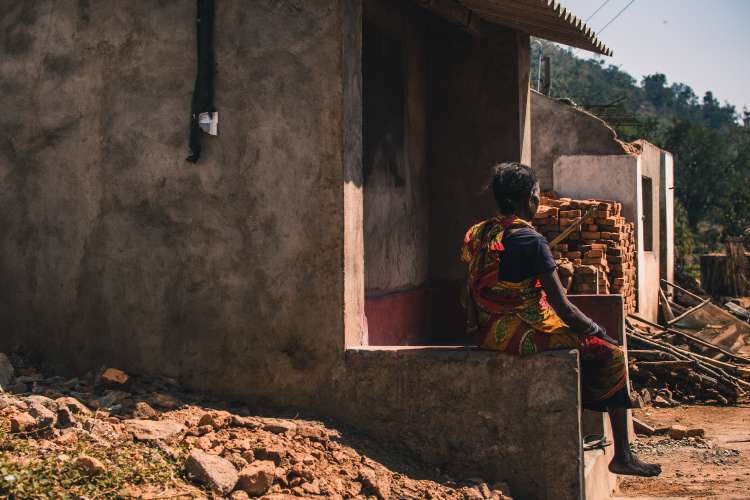
A combination of historical injustices and geographical disadvantages has left Bihar as one of India’s most underdeveloped states. Despite various efforts by the government to boost the state’s economy, progress has been elusive. The recent Bihar caste survey report reveals a dismal performance, with widespread multidimensional poverty.
More than a third of Bihar’s households survive on approximately Rs 200 a day. The poorest among them are the scheduled castes, with nearly 44% of the families earning below this threshold. Educationally, only 7% of the population are graduates, and a staggering 96% do not own vehicles.
The statistics emerge from the caste census report, presented in the state’s legislative houses on Tuesday. Conducted from January to August, the survey identifies the extremely backward classes (EBCs) as the largest social group in Bihar. With this detailed report, demands for increased quotas for OBCs may intensify. The state government, led by Chief Minister Nitish Kumar, asserts that the report’s findings will lay the groundwork for inclusive growth.
READ | Extension of free food grains scheme reflects economic challenges
Multidimensional poverty in Bihar
Multidimensional poverty in Bihar extends beyond monetary scarcity to encompass inadequate education, poor healthcare access, and prevalent malnutrition. Essentially, poverty carries multiple disadvantages. Bihar is a major source of migrant workers, and despite political promises, the state’s predicament has stagnated since the 1990s. It remains as impoverished and backward as it was then.
In their paper Bihar: What Went Wrong? And What Changed, Arnab Mukherji and Anjan Mukherji pinpoint the under-investment in state infrastructure during the 1980s and 90s as the primary cause of Bihar’s stagnation. This neglect exacerbated social issues, allowed crime to proliferate, and corruption to soar, transforming the state from economically lagging to perilously unstable.
Data from the caste census reveal that around 94 lakh families, or 34.13% of Bihar’s 2.76 crore families, are economically distressed, earning less than 6,000 rupees monthly—an acute level of poverty. The NITI Aayog’s ‘National Multidimensional Poverty Index — A Progress Review 2023’ corroborates this, noting that 51.9% of Bihar’s population is multidimensionally poor, according to the National Family Health Survey (NFHS) 4.
Need concerted effort to tackle poverty
Eradicating poverty in Bihar requires a concerted effort from both the Union and state governments. Structural imbalances must be addressed to pave the path to prosperity, necessitating strong and dedicated leadership. Concerns about Bihar’s slow industrialisation and weak agricultural production persist. Despite being resource-rich, Bihar remains paradoxically poor. To change this, incentives for industries such as jute, leather, tea, locomotives, steel, and mining are crucial, as they have the potential to catalyse economic development.
Stimulating economic growth in Bihar also involves removing agricultural constraints. This would bolster the food processing and agro-based industries, anticipated to be key economic drivers, creating employment in rural areas and yielding high returns for farmers. Furthermore, promoting tourism is another avenue for economic enhancement. Bihar, rich in natural beauty and heritage sites, along with other eastern states, can capitalise on these assets to bolster its economy.
Bihar caste survey report highlights
The Bihar caste survey report has revealed some key findings about the state’s population and their socio-economic conditions. The report found that over 34% of the state’s families live below the poverty line, with the highest poverty rates among the Scheduled Castes (SCs) and Extremely Backward Classes (EBCs).
The report says more than half of the state’s population has studied only till Class 10 or below it, and that representation in government jobs is significantly higher among the upper castes. Additionally, the report found that a significant portion of the state’s population lives in pucca houses of two or more rooms, while a quarter lives in tin-shed houses. The report also said that 17.26% Muslim families earn less than Rs 6,000 a month.
While a collective effort of both the central and state government has helped alleviate poverty to some extent, it will take a long time to remove the poverty tag stuck on Bihar. The government needs to resolve key structural imbalances to push Bihar towards prosperity. For that, a strong and dedicated leadership is a prerequisite.
The pace of industrialisation in Bihar is also a major concern along with low agricultural production. Described as the land of paradoxes as Bihar along with other eastern states is the land of the poor with rich resources, the state needs government incentives on both central and state level for businesses to flourish in order to remove or substantially reduce the barrier of poverty. The key industries that have the potential to drive economy are jute, leather, tea, locomotives, steel and mining to name a few.
The key to spurring Bihar’s economic growth also lies in removing constraints on agricultural growth. It will impact Bihar’s food processing and agro-based industry which is expected to be a major growth driver for the local economy, creating large-scale employment in rural areas and high returns for the farmers. Government can also look into promoting tourism as Bihar, along with other eastern states, is essentially rich in natural beauty and heritage destinations.
